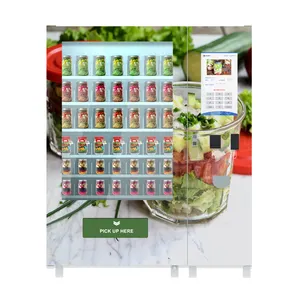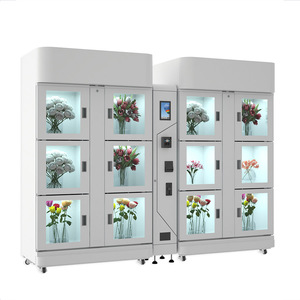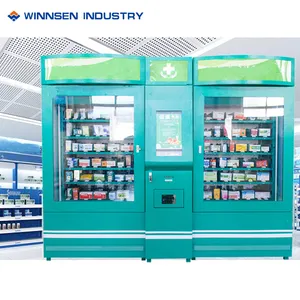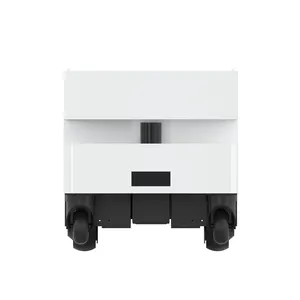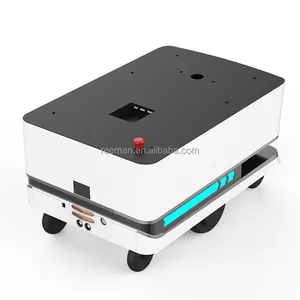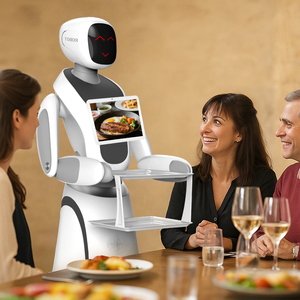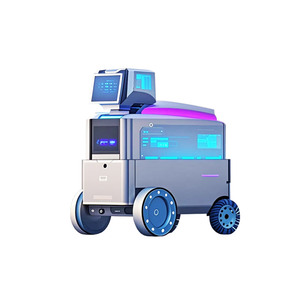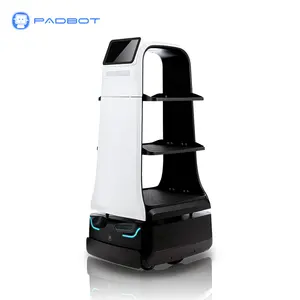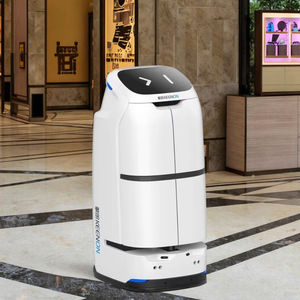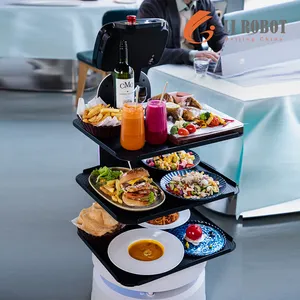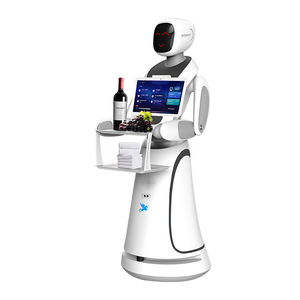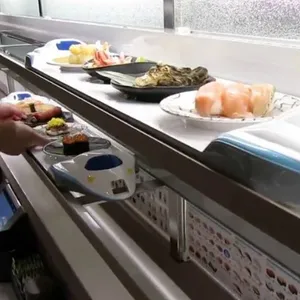Delivery Robots

 CN
CN





 Top sponsor listing
Top sponsor listing


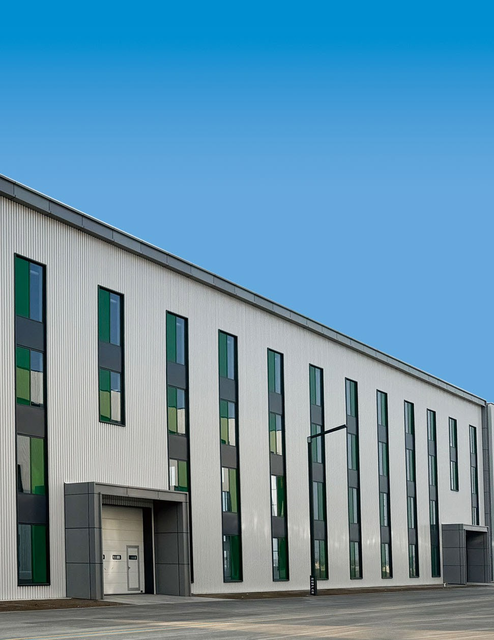
 1/1
1/1





 1/3
1/3

 CN
CN





 1/16
1/16



 0
0



 0
0










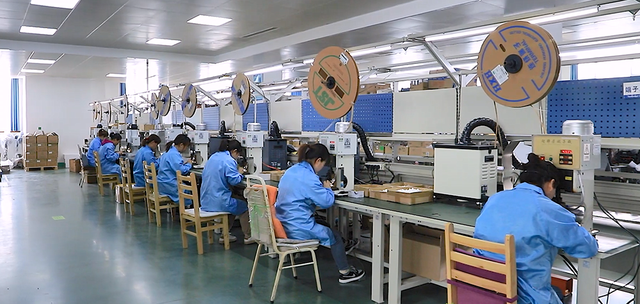

 1/3
1/3




 1/3
1/3




 1/3
1/3


 CN
CN







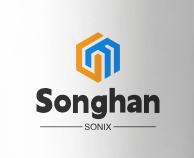

 1/3
1/3

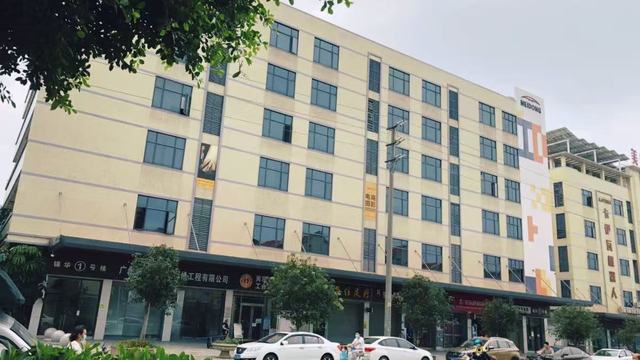
 1/1
1/1



 1/3
1/3



 1/1
1/1



 0
0



 0
0




 1/3
1/3







 1/3
1/3
About delivery robots
Where to Find Delivery Robots Suppliers?
China leads global production of commercial delivery robots, with concentrated manufacturing hubs in Guangdong and Shaanxi provinces offering distinct operational advantages. Guangdong, particularly Shenzhen and Guangzhou, hosts advanced robotics clusters integrating AI development, precision electronics, and agile prototyping facilities. These regions benefit from proximity to semiconductor suppliers and R&D centers, enabling rapid iteration cycles for autonomous navigation systems and human-robot interaction modules.
Shaanxi’s supply chain specializes in electromechanical integration, combining delivery robotics with thermal management and refrigeration systems—ideal for food and pharmaceutical logistics. Industrial ecosystems in these regions feature vertically integrated production lines, including CNC machining, injection molding, PCB assembly, and final system calibration—all within 50km radii. This localization reduces component procurement lead times by 25–40% and supports MOQ flexibility, ranging from single units to container-scale orders. Buyers gain access to scalable manufacturing with typical lead times of 15–30 days for standard configurations and 35–50 days for customized builds.
How to Choose Delivery Robot Suppliers?
Selecting reliable partners requires rigorous evaluation across technical, operational, and transactional dimensions:
Technical & Functional Validation
Confirm compliance with international safety and electromagnetic standards (CE, FCC, RoHS) for deployment in regulated markets. For indoor service environments (hotels, hospitals), verify obstacle avoidance performance through LiDAR or vision-based SLAM systems. Demand documentation on battery cycle life (target ≥1,000 charges), charging autonomy, and payload capacity (typically 20–50kg per tier). Suppliers should provide API access for elevator integration and fleet management software compatibility.
Production & Customization Capability
Assess supplier infrastructure using the following benchmarks:
- Minimum 3,000m² dedicated robotics assembly space
- In-house design teams supporting UI/UX customization, voice interaction, and branding (logo, color, packaging)
- Prototyping capability within 7–10 days for proof-of-concept validation
Cross-reference product listings with verified customization tags and on-time delivery rates exceeding 90% to ensure scalability and reliability.
Transaction & Risk Mitigation Protocols
Utilize secure payment mechanisms such as escrow services until acceptance testing is completed. Prioritize suppliers with documented quality control processes, including pre-shipment inspections and burn-in testing (minimum 48-hour continuous operation). Analyze reorder rates: values below 15% indicate broad market reach and consistent satisfaction, while higher rates may suggest niche positioning or dependency on repeat clients. Response time under 2 hours reflects strong customer support infrastructure.
What Are the Best Delivery Robot Suppliers?
| Company Name | Location | Type | Main Products | On-Time Delivery | Avg. Response | Reorder Rate | Online Revenue | Customization |
|---|---|---|---|---|---|---|---|---|
| Shenzhen Reeman Intelligent Equipment Co., Ltd. | Guangdong, CN | Custom Manufacturer | Commercial Delivery Robots, AGV, Logistics Robots | 100% | ≤2h | <15% | US $60,000+ | Color, size, logo, packaging, material, graphic |
| Shaanxi Jinyu Kitchenware Co., Ltd. | Shaanxi, CN | Multispecialty Supplier | Commercial Delivery Robots, Refrigeration Equipment | 100% | ≤1h | <15% | US $9,000+ | Limited (product-integrated solutions) |
| Guangdong Exhibition Hall Intelligent Equipment Co., Ltd. | Guangdong, CN | Multispecialty Supplier | Outdoor Delivery Robots, AI Voice Robots, Logistics Robots | 90% | ≤1h | 50% | US $20,000+ | Standard models with modular upgrades |
| Guangzhou Inbot Technology Ltd. | Guangdong, CN | Multispecialty Supplier | Autonomous Delivery Robots, Smart Waiter Robots | 88% | ≤3h | <15% | US $140,000+ | Color, logo, packaging, graphic, photos |
| Shangrao Junlan E-Commerce Co., Ltd. | Jiangxi, CN | E-commerce Integrator | Indoor Delivery Robots, Hotel Service Robots | 100% | ≤2h | <15% | US $100+ | OEM/ODM via third-party brands |
Performance Analysis
Shenzhen Reeman and Shaanxi Jinyu demonstrate optimal delivery reliability (100%) and low reorder dependency, indicating diversified client bases and stable output quality. Guangzhou Inbot leads in online revenue volume, reflecting strong export activity and brand visibility. While its on-time delivery rate is slightly lower at 88%, its extensive customization options and high transaction volume suggest robust post-sales support infrastructure. Suppliers like Guangdong Exhibition Hall show elevated reorder rates (50%), which may reflect targeted marketing to specific verticals such as hospitality or healthcare rather than broader market penetration.
For large-scale deployments, prioritize manufacturers with in-house R&D, documented customization workflows, and proven experience in international shipping. For pilot programs, consider suppliers offering sub-$3,000 entry-level models with elevator integration and multi-language voice support.
FAQs
How to verify delivery robot supplier credibility?
Cross-check certifications (CE, ISO 9001) with official registries. Request factory audit reports or video tours confirming robotic assembly lines, testing bays, and quality inspection stations. Evaluate technical responsiveness by submitting functional queries about navigation algorithms or battery management systems.
What is the typical minimum order quantity (MOQ)?
Most suppliers offer MOQs of 1 unit for standard models, facilitating sample testing and small-scale deployment. Bulk pricing typically applies at 5+ units, with discounts averaging 8–15%. Outdoor or industrial-grade models may require 10-piece minimums due to specialized components.
Can delivery robots be customized for specific industries?
Yes. Leading suppliers support sector-specific modifications including temperature-controlled compartments (food/pharma), sterile enclosures (healthcare), multilingual interfaces (hospitality), and API integrations for building management systems. Custom branding, tray configuration, and voice prompts are widely available.
What are common power and performance specifications?
Standard models operate on 24V–48V lithium-ion batteries with 6–8 hours runtime and automatic docking for recharging. Payload capacity ranges from 20kg (two-tier) to 50kg (four-tier). Navigation accuracy is typically ±2cm using dual-mode SLAM (LiDAR + visual). Maximum speed averages 0.8–1.2 m/s with dynamic obstacle detection up to 5 meters.
How to manage logistics and import compliance?
Suppliers with established export channels provide FOB or CIF shipping terms and assist with customs documentation. Ensure robots comply with destination-country regulations for electrical equipment and autonomous devices. Air freight takes 5–10 days for samples; sea freight requires 25–40 days for full container loads. Pre-shipment testing ensures EMC and safety standard adherence.


